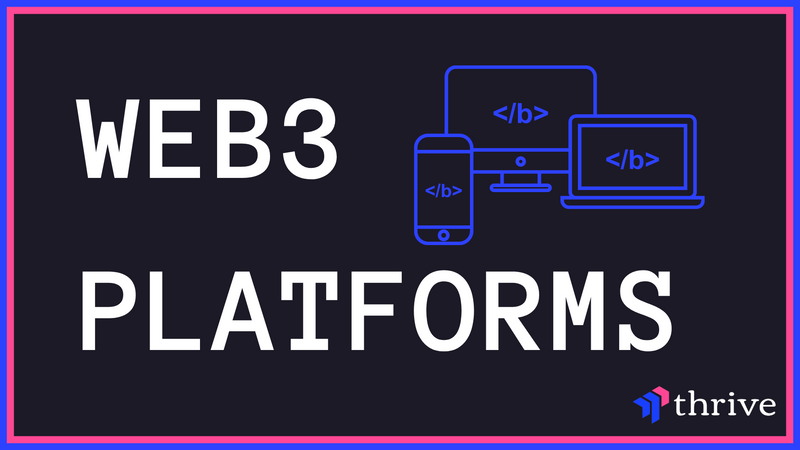Choosing the Right Web3 Platform

Choosing the Right Web3 Platform for Your Needs
Web3 platforms are the future of decentralized technology, offering a new way to build and interact with applications. With so many options available, it can be difficult to know which platform is best for your needs. In this article, we'll explore some of the most popular web3 platforms, including Ethereum and Polkadot, and help you understand the benefits and trade-offs of each.
Web3 Platforms
Web3 platforms are decentralized networks that enable developers to build and deploy decentralized applications (dApps). These platforms use blockchain technology to provide a secure and trustless environment for data storage and exchange. Unlike traditional web platforms, which are centralized and controlled by a single entity, web3 platforms are community-driven and operated by a network of nodes. This makes them more secure, transparent, and resistant to censorship and interference.
One of the key benefits of web3 platforms is the ability to create truly decentralized applications. With web3, dApps can be built and run on a network of nodes, making them less susceptible to downtime, hacking, and other types of interference. Additionally, web3 platforms often offer developers access to a wide range of tools and resources for building and deploying dApps, including smart contract languages, development frameworks, and more.
Ethereum
Ethereum is one of the largest and most well-established web3 platforms. It was launched in 2015 with the goal of creating a decentralized platform for building and deploying dApps. Ethereum uses its own programming language, Solidity, to enable developers to create smart contracts that can be used to power a wide range of applications.
One of the biggest benefits of Ethereum is its large and active community of developers. With a large pool of developers, you can be sure that there will be plenty of resources and support available as you build and launch your dApp. Additionally, Ethereum has a robust ecosystem of tools and resources, including a range of development frameworks, libraries, and more, making it easier to get started with web3 development.
However, one of the trade-offs of Ethereum is its scalability. Due to the high demand for processing power and storage on the network, it can be difficult for Ethereum to handle large numbers of transactions, leading to high fees and slow processing times. This can be a drawback for dApps that require high levels of throughput, but it's important to note that the Ethereum community is actively working to improve scalability.
Polkadot
Polkadot is a relatively new web3 platform that was launched in 2020. It was designed to address some of the scalability challenges faced by Ethereum and other web3 platforms. With Polkadot, developers can create and deploy decentralized applications that can scale and operate across multiple blockchain networks.
One of the key benefits of Polkadot is its interoperability. With Polkadot, developers can build and deploy dApps that can easily interact with other blockchain networks, making it easier to access a wide range of data and services. Additionally, Polkadot offers a number of advanced features, such as parallel execution of smart contracts and the ability to create and deploy custom blockchains, that make it a compelling option for web3 development.
However, it's important to note that Polkadot is still a relatively new platform, and it may be more difficult to find support and resources compared to more established platforms like Ethereum. Additionally, because Polkadot is a newer technology, there may be more risk associated with using it for web3 development. In conclusion, both Ethereum and Polkadot offer unique benefits and trade-offs for web3 development.
Conclusion
Web3 platforms have the potential to change the way we interact and transact on the internet, with decentralized systems and blockchain technology offering a new level of security, transparency, and efficiency. When it comes to choosing the right platform for your needs, it's important to consider your requirements and priorities, such as the type of applications you want to build, the level of customization you require, and the level of community and development support available.
Whether you choose Ethereum, Polkadot, or another web3 platform, the key is to understand the benefits and limitations of each, and to select the one that best fits your goals. As the web3 ecosystem continues to evolve, it's likely that new platforms will emerge, offering new features and capabilities, and it's important to stay informed and up-to-date on the latest developments in this exciting field.
Ultimately, web3 development holds great promise for the future, and we can expect to see new and innovative use cases emerge in the coming years. Whether you're a developer, entrepreneur, or simply an enthusiast, there's never been a better time to get involved in the world of web3 platforms and decentralized technologies.
READ MORE: Building the Future With Web3 dApps

